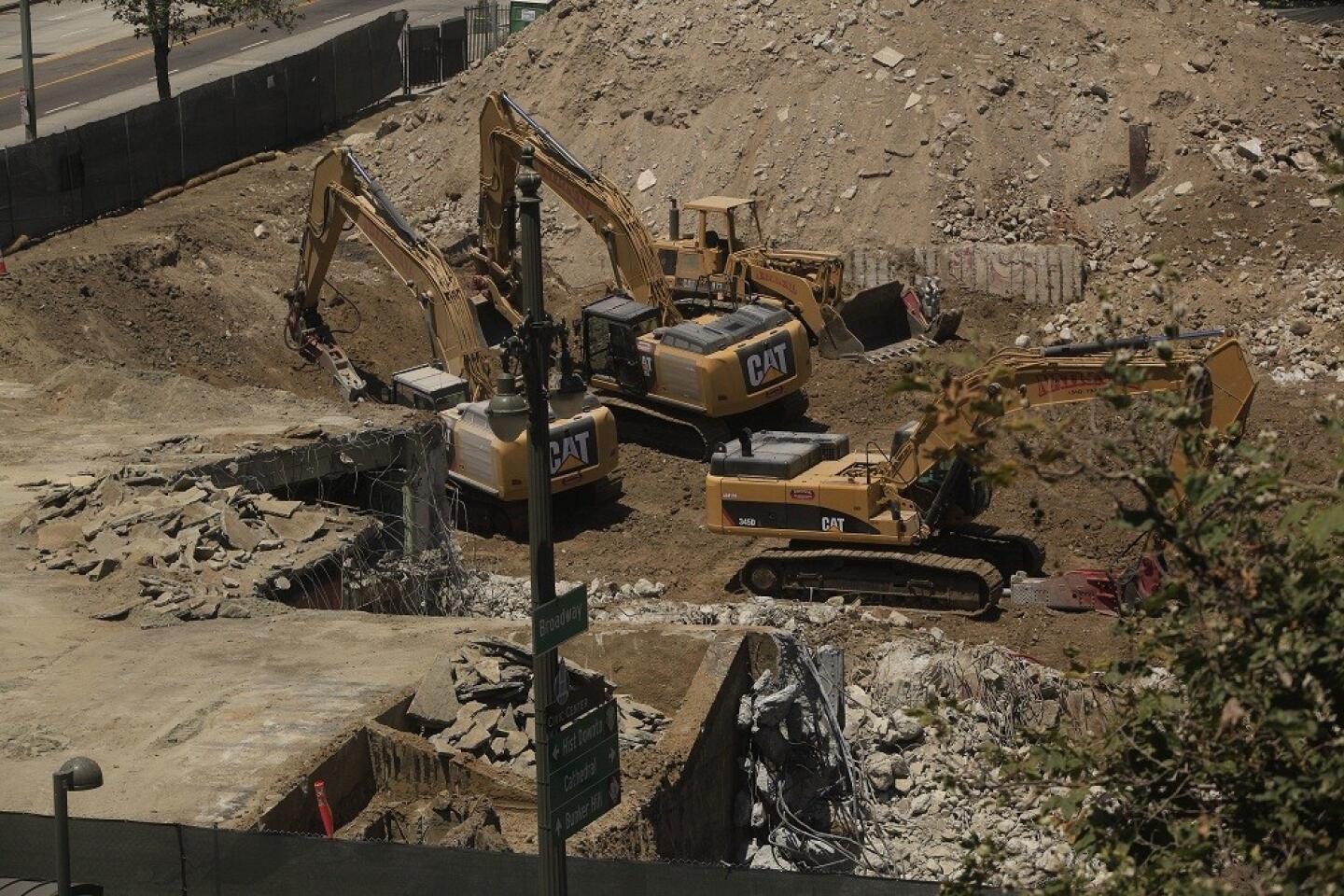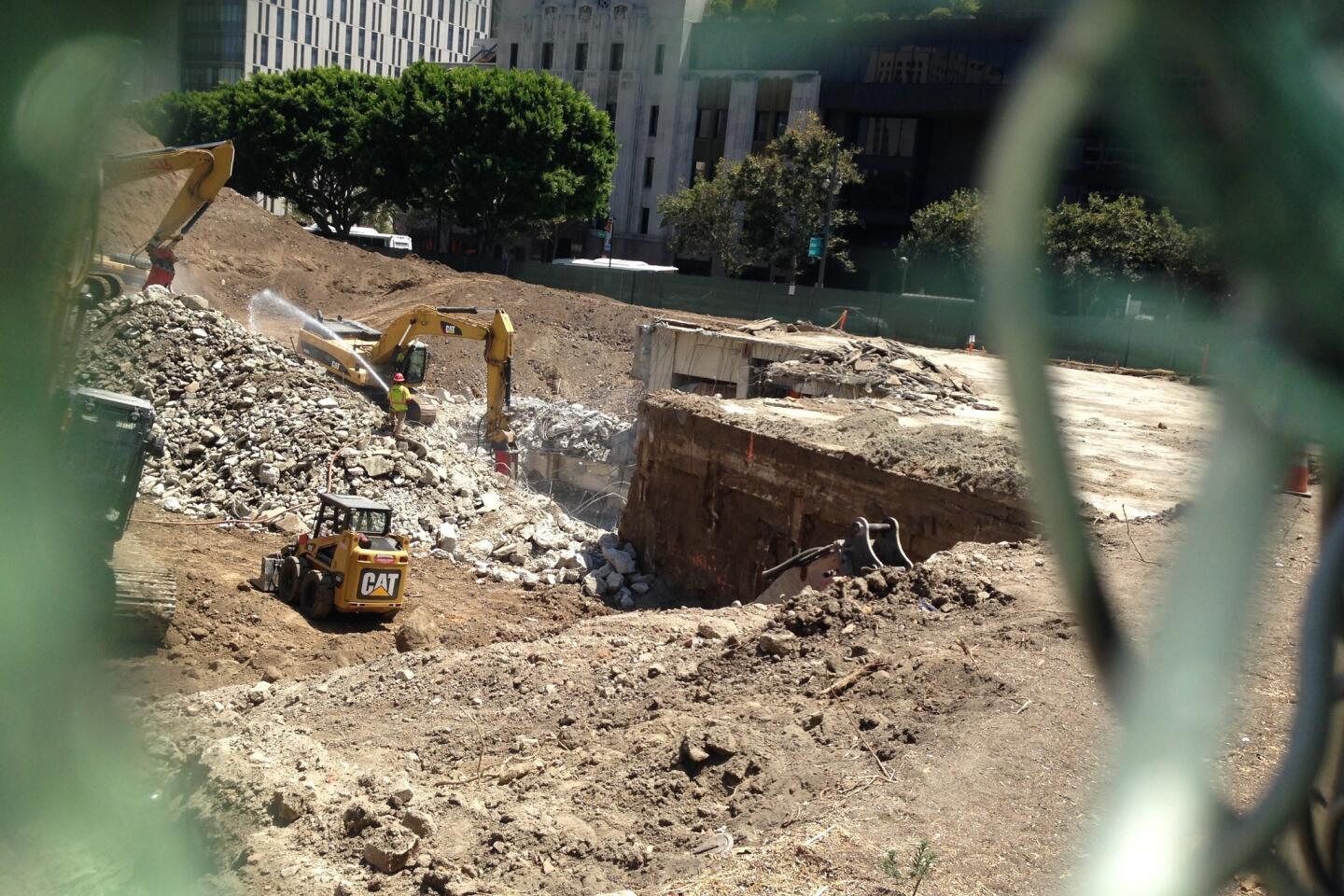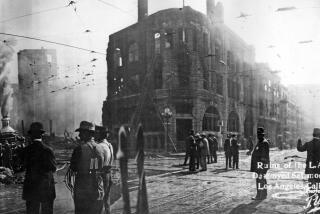Old lawsuit backs theory that demolition crew found old L.A. Times
There was some excitement in recent days among history buffs when earthmovers uncovered what could be the basement of the former Los Angeles Times Building at the northeast corner of Broadway and 1st Street.
Crews are demolishing structures at the site to extend Grand Park.
Some disappointment then ensued -- at least in the L.A. Times newsroom -- when partial demolition revealed a multilevel structure. Could this just be another old underground parking garage? One such structure already had been pulverized for the park extension.
But a find by Jaye Steinbrick, senior director of information services for the L.A. Law Library, which is across the street from the site, gives new life to the original theory.
It turns out the old Times building extended for three floors underground. Thus, the structure still could be part of the old newspaper headquarters.
The floorplan details come via a 1933 appeals court ruling in City of Los Angeles vs. Klinker. (Klinker’s identity is not made clear in the ruling). The case concerns the city’s successful effort to seize the property through eminent domain. The city intended to pay The Times about $1 million, but The Times wanted more and sued to get it.
A lower court sided with the city; the higher court with The Times.
As background, the ruling includes a description.
The building “consists of three stories underground and five stories above ground and is designed to carry two extra stories,” a panel of judges wrote. There also was “a northerly annex thereto constructed in 1921, and four so-called secondary buildings located on the north side of First Street.”
The Times wanted more money because of its “improvements” to the property, which included built-in printing presses.
“The foundations for the great presses were constructed independently of, but blending with, the foundations for the building, to prevent vibration which might have affected the stability of the building foundations,” the ruling noted.
The presses “extended from the basement floor down through the sub-basement to the ground.”
Five presses were installed during construction in 1912; two more were added about 1926. The presses ranged “from 23 to 42 feet in length, from 9 to 11 feet in width and from 16 to 25 feet in height, weighing from 80 to 147 tons each.” They were installed on massive customized foundations that contained 13,331 cubic feet of reinforced concrete.
The presses, supported by cast-iron columns, were equipped with runways, ladders and a mezzanine landing for the workmen and operated by a drive mechanism under the floor.
“The interior arrangement has been most carefully studied out, until every detail is perfect,” The Times dutifully reported when the building permit was issued in November 1911. The edifice was promised to be “of reinforced concrete, fireproof and bombproof construction.”
The bomb reference paid homage to the fate of the previous building on the same spot. Dynamite planted in an adjacent alley had ignited gas lines that destroyed the newspaper’s previous home, built in 1886.
History buffs speculated that the uncovered basement might be from the 1886 building, which is infamous because of the politically motivated bomb blast that claimed the lives of 20 to 30 Times employees.
The multi-story underground ruins, however, suggest the 1912 building. The revealed structure has the distinct diagonal edge that was a feature of the 1912 building -- and perhaps of the 1886 building as well.
The site is not designated as a historic cultural resource, nor has it been identified as having historic significance. Because of that, the city has little information on its background, said Ken Bernstein, who heads the city’s Office of Historic Resources.
The L.A. Conservancy said it has no information on what replaced the 1912 building.
It’s possible that nothing did. Historians say much of the area became a lawn for the state building next door. This acreage as well as the site of the demolished state building has been fenced off for years.
When the old building -- or at least its upper floors -- were demolished, The Times already had constructed its current flagship building across the street, at the northwest corner of 1st and Spring streets.
The ruins are rapidly disappearing under the assault of a demolition team.
Follow me @howardblume
Times staff writer Catherine Saillant contributed to this report.
More to Read
Sign up for Essential California
The most important California stories and recommendations in your inbox every morning.
You may occasionally receive promotional content from the Los Angeles Times.













